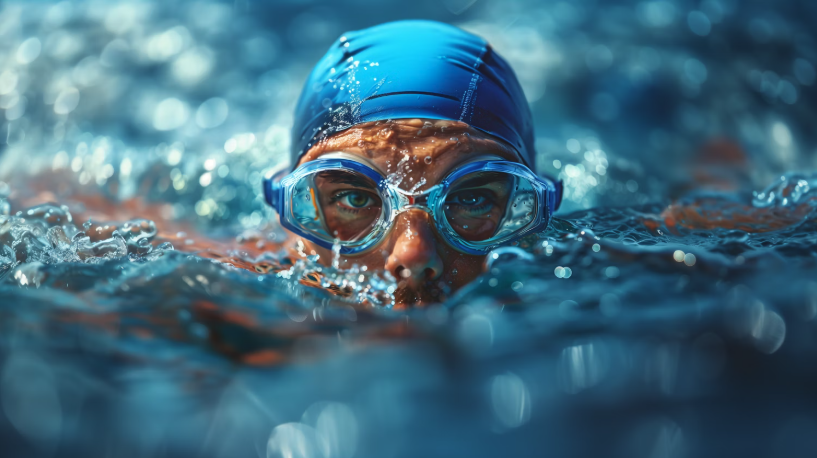28 de October de 2025
What Is SWOLF in Swimming and How to Improve It
In swimming, efficiency is everything. While speed is the ultimate goal, the best swimmers aren’t just the fastest — they’re the most efficient in the water. That’s where SWOLF comes in: a metric that blends speed and stroke efficiency into one indicator of swimming economy.
If you’ve wondered “What is SWOLF in swimming?” or “How can I use it to get faster?”, this guide breaks it down and shows how to improve it.
What does SWOLF mean in swimming?
SWOLF is short for Swim + Golf, and it represents a swimmer’s efficiency score.
Formula: SWOLF = Stroke Count + Time (for a set distance)
Example: if you swim 25 m in 20 s using 18 strokes, your SWOLF is 38.
Just like golf, lower is better, because you’re covering the distance faster with fewer strokes — more efficiency and better technique.

How to interpret your SWOLF
SWOLF is about economy, not only absolute speed. A lower score generally means longer distance per stroke and good streamline. But context matters:
- A low SWOLF might reflect long, powerful strokes (great efficiency) but possibly slower turnover.
- A higher SWOLF could come from a higher stroke rate (more speed) but less efficiency.
Coaches compare SWOLF across sets, sessions, and strokes (free/back/breast/fly), looking for trends rather than chasing a single “ideal” number.
What is a good SWOLF?
There’s no universal “good” SWOLF because it depends on height, technique, distance, and stroke. As a rough freestyle guide:
- Recreational: SWOLF 40–50
- Competitive: SWOLF 35–45
- Elite: below 35
Don’t compare with others — track your own trend and aim to reduce your average via technical and conditioning gains.
How to improve your SWOLF
- Refine technique (reduce drag, improve catch)
- Keep a tall, aligned body line; minimize lateral sway.
- High-elbow catch and full extension to maximize propulsion.
- Film your stroke to detect hand entry or recovery inefficiencies.
- Increase distance per stroke (DPS)
- Prioritize quality length over frantic turnover.
- Use drills like catch-up, fingertip drag, and sculling to feel water and extend the pull.
- Optimize rhythm and stroke rate
- Balance stroke length with cadence.
- Use a tempo trainer to test slight changes in rate while holding form.
- Build specific strength and power
- Dryland matters. Integrate strength blocks guided by velocity based training to develop propulsive power efficiently and avoid junk volume.
- Manage fatigue and load
- SWOLF worsens when fatigue creeps in. Track your load trends with Chronic Training Load and readiness via Training Stress Balance to time harder sets when you’re fresh.
Final thoughts
Your SWOLF is a mirror of your swimming economy — how efficiently you convert effort into forward motion. Improve technique, strengthen intelligently with VBT, and manage fatigue with load metrics to lower SWOLF while getting faster.Efficiency wins races. With Vitruve Encoder and Vitruve AMS, you can quantify, understand, and optimize each step — from the weight room to the water.
